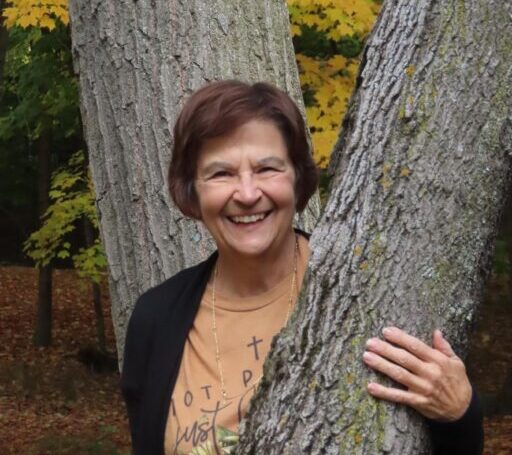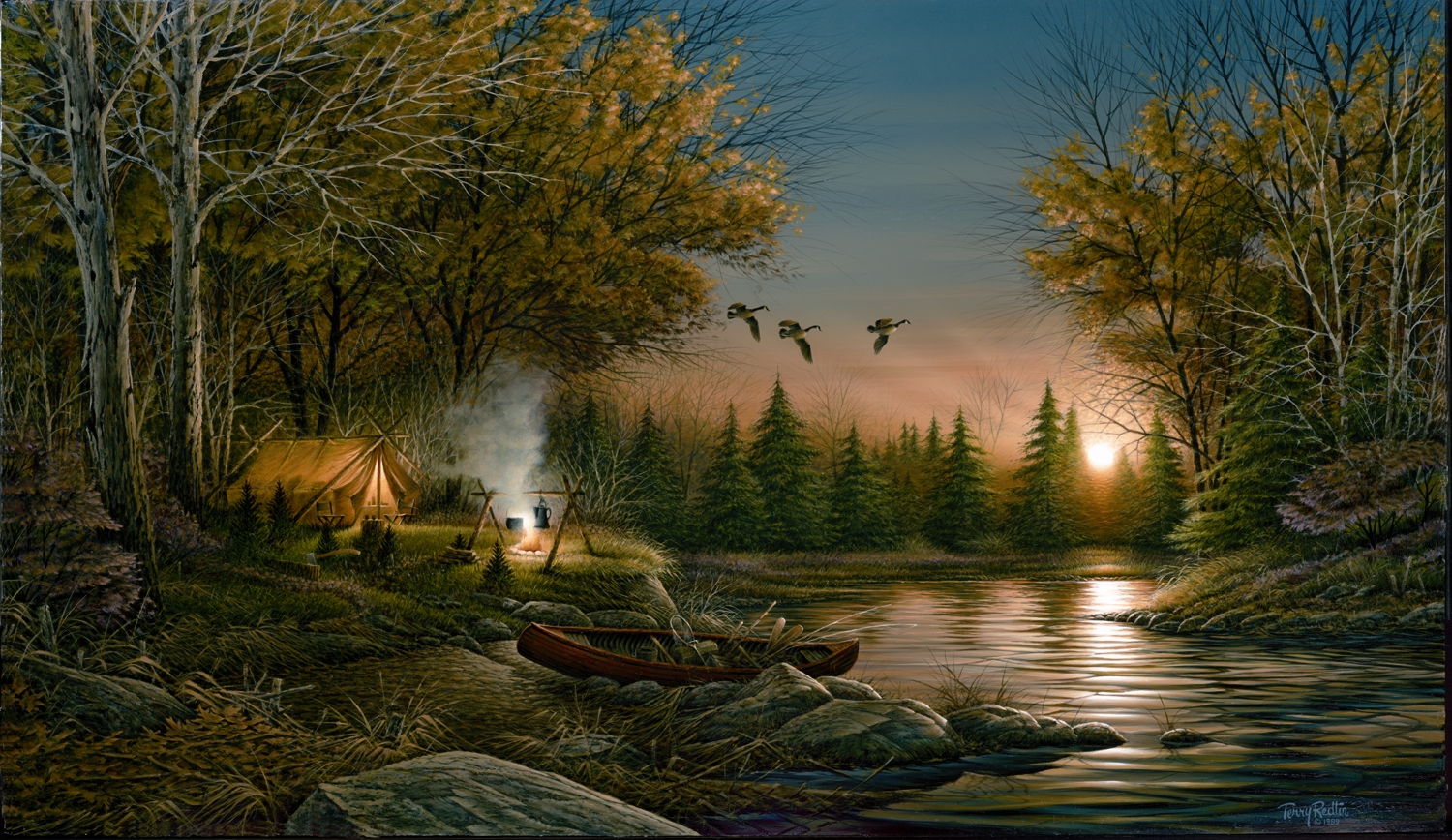Sank the Tank
Folks in the Nebraska Sandhills are resourceful people. I grew up there, and if you’re not born with a resourceful bent, you soon learn to be that way. Living 25-50 miles from the closest town makes for a convincing teacher.
Resourcefulness is essential for time management, and sometimes even survival. But it doesn’t stop there for Sandhillers. They also apply the concept of resourcefulness to leisure activities. My sister and her husband manage the family ranch and this is what she has to say about it. “If there’s not more than one use for something, it’s probably not worth having.” Stock tanks are no exception. Now, you might ask (if you’re not a Sandhiller), what could you possibly use a stock tank for besides holding water that flows from the windmill so that the cows can drink? The answer is – for fun!
I was privileged to take part in “tanking” two weeks ago when my son and I traveled to the ranch to visit family. After returning from church on Sunday we took a vote. Tanking won over napping, three to one. After careful inspection of the two used stock tanks in the corral, we chose the one with a tar repaired crack traversing the diameter of the floor, over the one with an eight inch chunk of metal missing from the bottom. We loaded the steel tank and our other equipment into the back of the horse trailer and off we went. Just below the first culverts we rolled the tank down the slight bank and into the Calamus River that winds its way lazily through the ranch. I climbed in first.
Two of us positioned ourselves (somewhat precariously) on overturned five gallon buckets. One of us sat in the plastic lawn chair that had been tossed in when we loaded up. Johnny insisted on seating himself (even more precariously) atop a short step-ladder so he could watch for sandbars and barb wire fences. We deemed him “Captain of the Ship.”
As we steered our way down the river with the two old dilapidated wooden oars we had brought along, it didn’t escape our notice that a small trickle of water was finding refuge inside our craft. We didn’t pay it much mind, knowing that our excursion would only be a couple of hours. A little bit of water in the bottom of the tank wouldn’t be of any consequence.
Tanking is a natural social event as everyone faces each other. A cooler of refreshments sat in the middle of the four of us as we hunkered down for a relaxing, peaceful afternoon. The vessel rotated back and forth gently (for the most part) under the authority of the current. This gives the passengers equal opportunity to see what lies ahead at times, but also gives a retro view of things passed.
My sister, Connie, and I both had our identical cameras on our laps, waiting for that beaver, deer, or blue heron to appear around the next bend. John and Caleb occasionally steered us clear of sandbars or pushed us further from the bank with the oars. John – the captain that he is, and always thinking of his crew – brought along his cell phone. At the end of the journey, he would call his son-in-law to pick us up and transport us back to our vehicle.
What a gift to be able to enjoy a warm, pleasant afternoon on the river with family! Partly cloudy skies kept us cool and a slight breeze kept the mosquitoes and deer flies away. We continued leisurely down the river, chatting about whatever came to mind, and forgetting any worries.
Down around a few more bends, one of us remarked that his feet were damp. The water level had risen above sole level. Our craft was taking on more water than we had anticipated. John grumbled that his new boots were getting wet. (He was now wishing he had stayed home for that nap he had voted for.) I didn’t bring it up that wearing new boots on a water expedition might not have been the wisest choice.
Connie, on the other hand, had a brilliant idea. Inside the cooler she had packed a wide mouthed two-quart size plastic jar with water in it. She retrieved it from the cooler, dumped the water overboard, and then promptly passed the jar to me. It was as if I was expected to start dipping away at the water on the bottom of the tank. She, on the other hand clutched her camera, taking pictures of everyone else’s activity. I refrained from reminding her that I also had my camera, but instead, dutifully placed it inside the cooler and began to bail.
Nearly an hour later, we were closing in on the end of the journey. Two culverts lay ahead that we would not be able to pass through. All eyes were on the bank ahead of us now, searching for a tree limb or bush we could grab onto so we could disembark easily. That’s when Old Faithful erupted – not from a natural artesian well nearby, but from the center of the craft! The geyser of water shot up along the previous repaired tar line. Everyone – except the camerawoman, of course – grabbed buckets and started to bail, and bail, and bail. Five gallons of water thrown overboard with each dip. When river water crested the top of our vessel and poured in over the side, Captain Johnny lamented, “This isn’t looking good.”
Within seconds our tank sat at the bottom of the river with us still aboard. Caleb grabbed his aunt’s camera from her hands and held it up at arm’s length, saving it from damage. My camera, on the other hand, was still in the cooler; rocking between us like a bobber on a windy lake. I grabbed the cumbersome chest in hopes of keeping the lid above the water line. The captain and his wife were the first to abandon ship. No criminal charges have been filed due to the fact that they were closest to the bank and their actions seemed justified. As soon as I could, I passed off the cooler to them . I was helped ashore by the captain’s outstretched hand and Caleb’s shove. I darted for the cooler, yanked open the lid, and grabbed my camera case. It was damp, but miraculously, the camera inside was dry and functioning. The captain’s cell phone (also in the cooler) did not fair so well – as lifeless as an orchid in a North Dakota winter. Three drenched adults packed up all the equipment – minus one tank – and started the trek back to the vehicle. One drenched adult carried her camera, posed and ready.
Would we do it again? Absolutely! It had been years since I had laughed to the point of a gut wrenching side ache. And as far as I could tell, everyone else was having just as much fun. Next time, will we enlist the services of an outfitter’s company and be supplied with an undamaged tank, brightly colored carbon fibre ores, and a contract to ensure our safety? Heck no – that’s what made the trip memorable. None of us are likely to forget our trip down the river on August 20, 2017. How could we? Connie has a “boat load” of pictures to remind us!
Don’t bother to call John and get his rendition of the story; more than likely you won’t be able to reach him. Last I knew his phone was still buried in rice on the kitchen counter.
Until next month – keep on readin’ and I’ll keep on writin’.
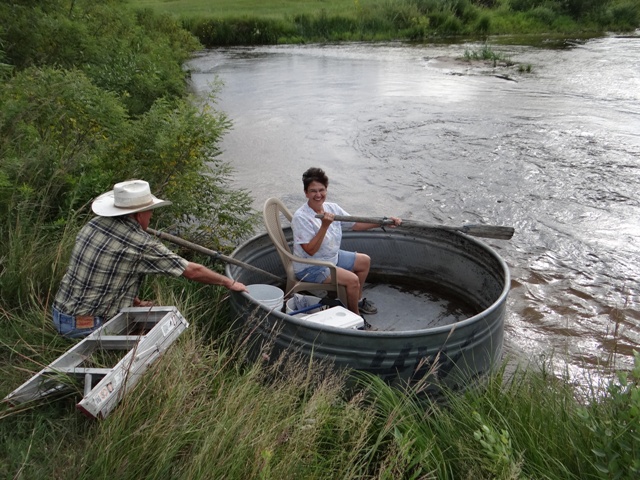
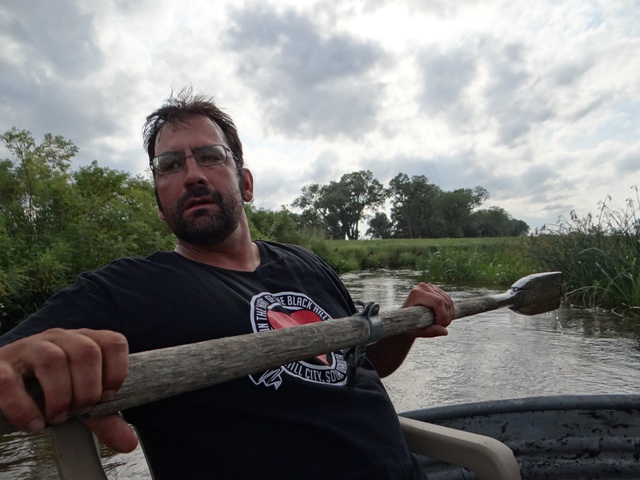
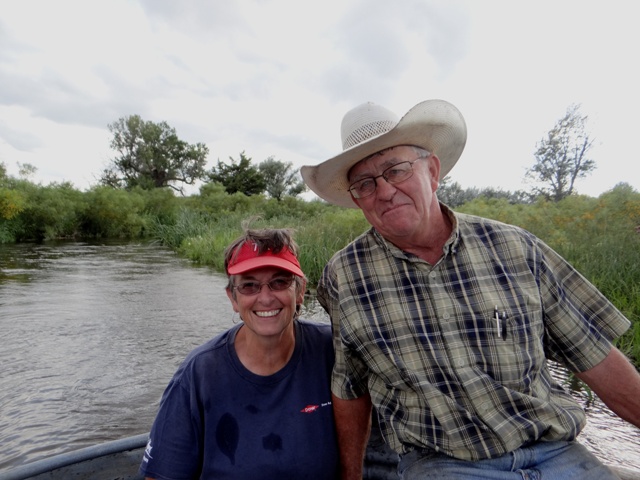
.
